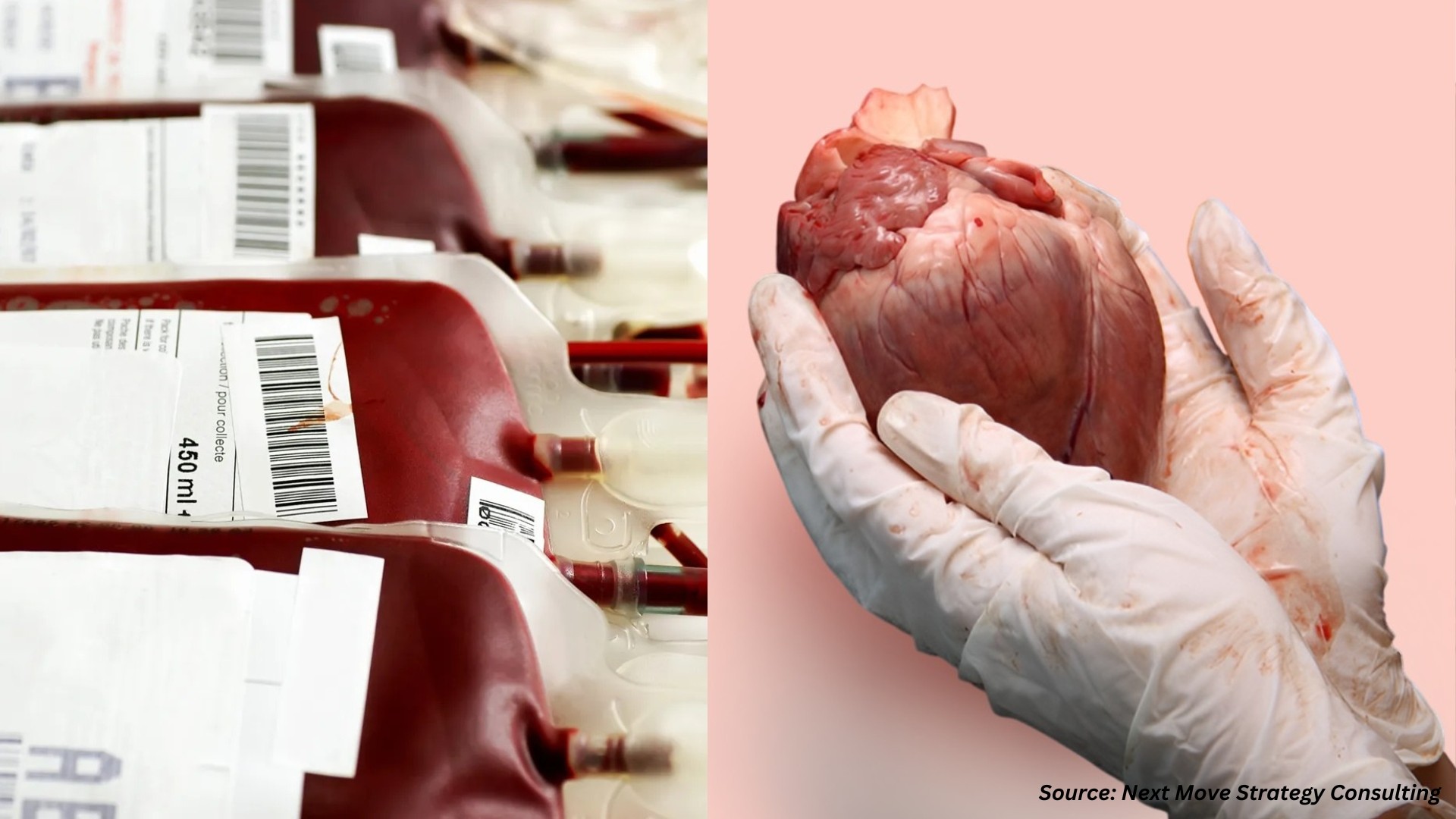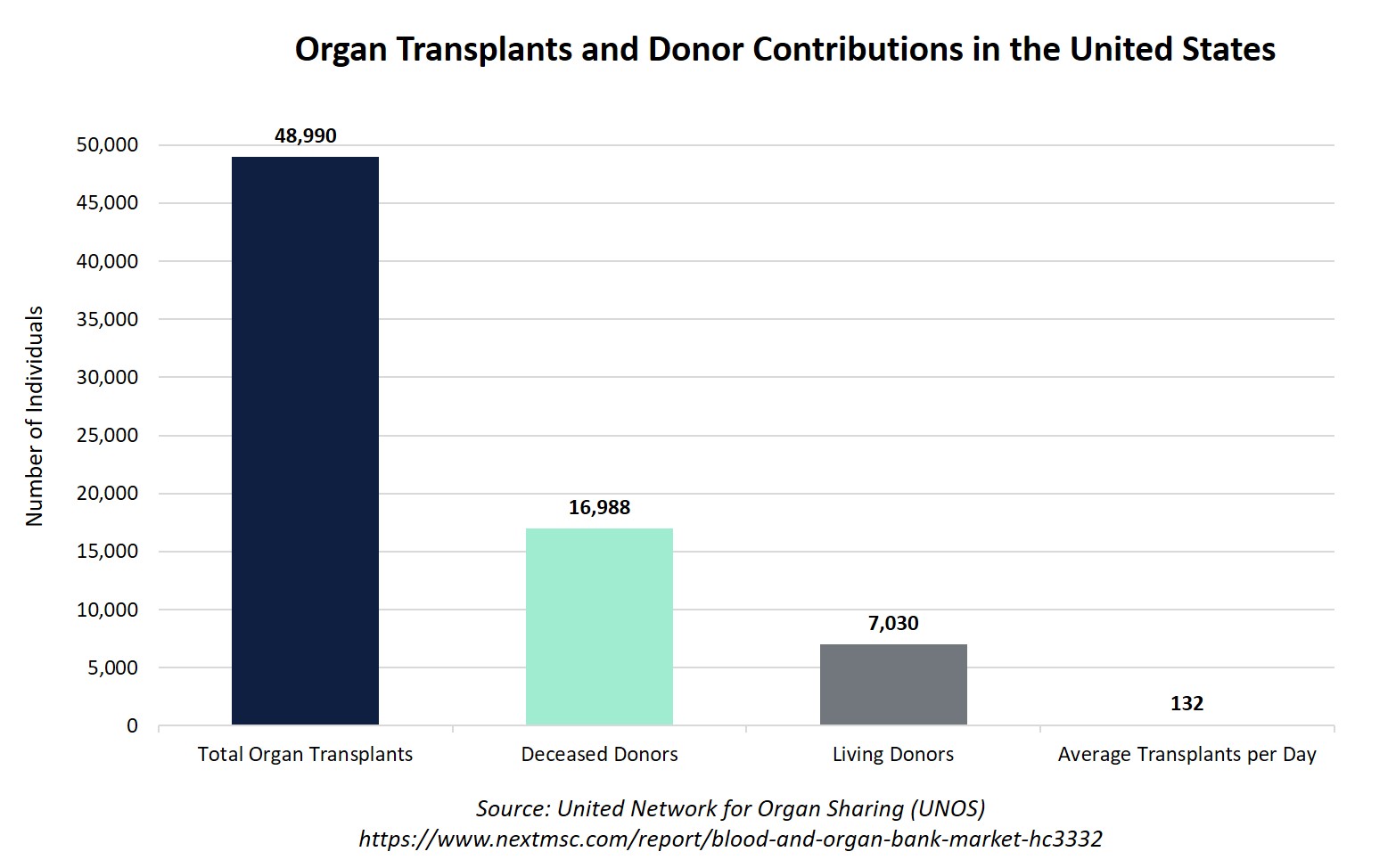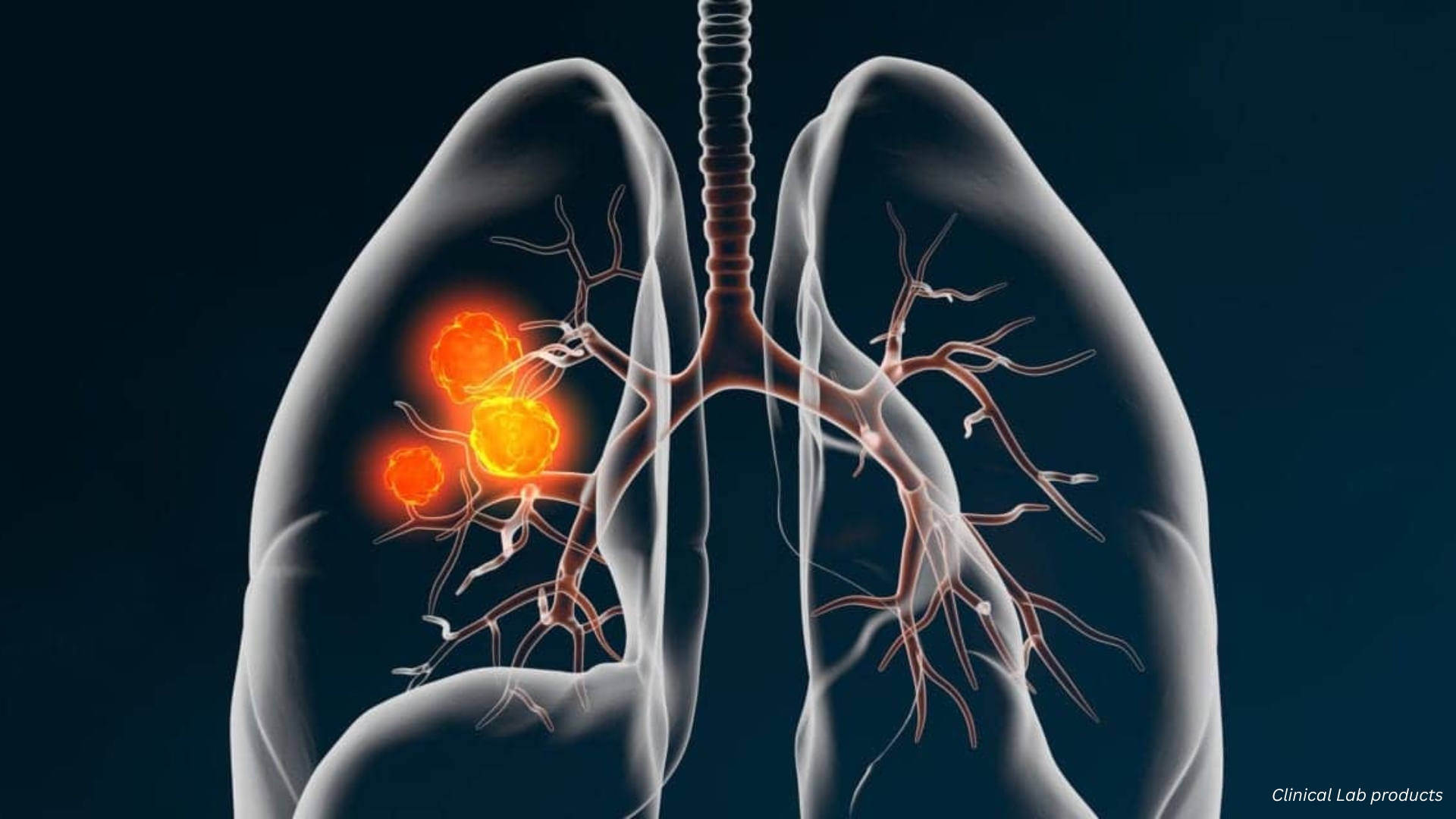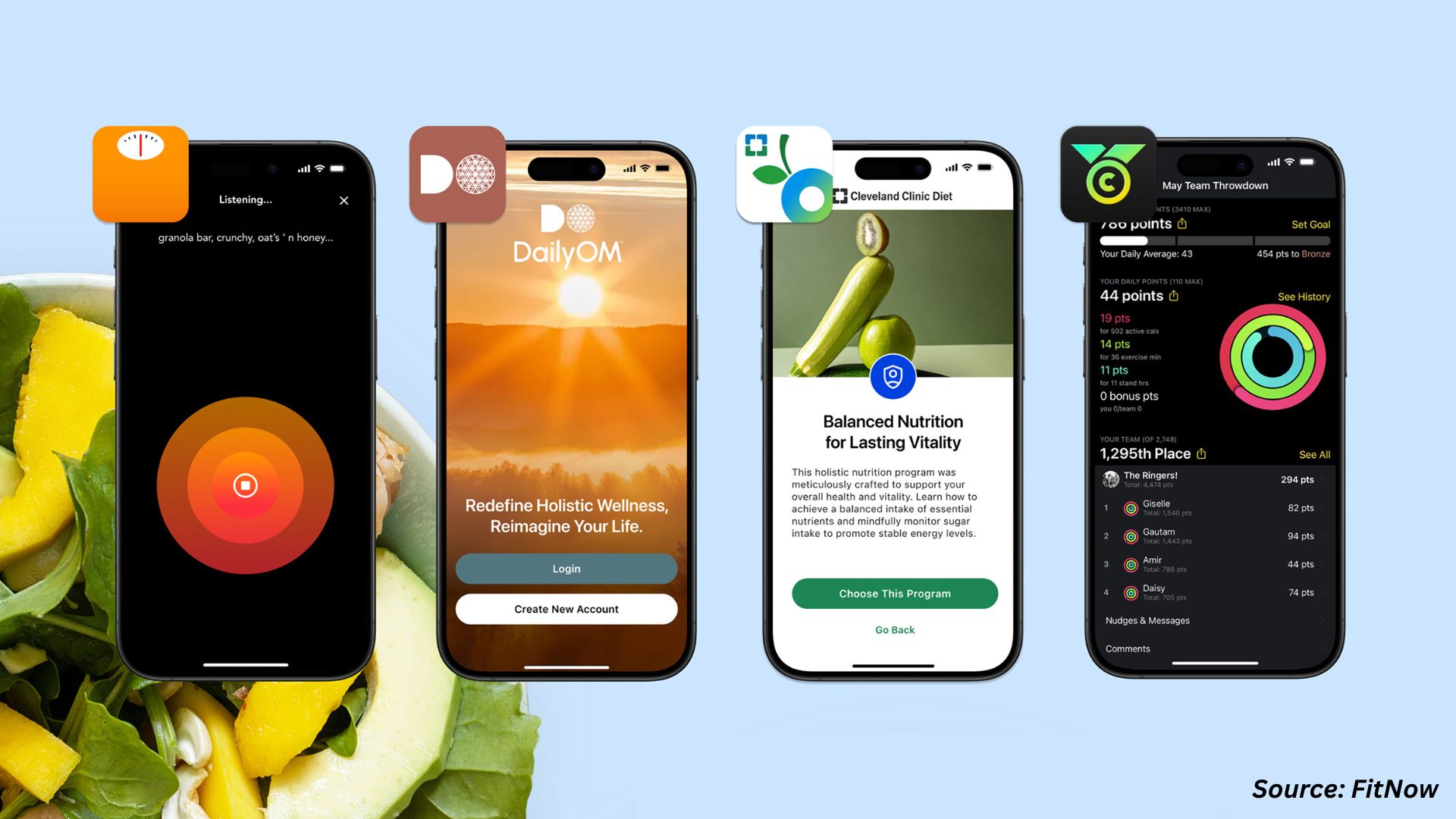Emerging Trends in Blood and Organ Banks
Published: 2025-09-10

The Blood and Organ Bank Market is undergoing transformative growth propelled by technological integration, rising demand for transfusions and organ transplants, and cross-sector applications. From the deployment of artificial intelligence in donor matching to virtual reality (VR) for workforce training, recent advancements are setting new standards for precision, safety, and accessibility.
Record-Breaking Organ Transplant Milestones in 2024
According to data from the Organ Procurement and Transplantation Network (OPTN). This is the first time the United States has ever performed more than 48,000 organ transplants in one year and represents a critical step in the nationwide effort to increase the number of lifesaving organ transplants while improving the system.
Key Highlights:
-
In 2024, the United States performed an average of 132 organ transplants per day.
-
A total of 48,990 organ transplants were completed throughout the year.
-
16,988 deceased donors contributed to this record-breaking achievement.
-
7,030 living donors also played a crucial role in saving lives through organ donation.
-
This progress was supported by donor families and skilled medical professionals nationwide.
Organ Transplants and Donor Contributions in the United States (2024)
Summary:
In 2024, the United States achieved a historic milestone by performing more than 48,000 organ transplants in a single year, according to data from the Organ Procurement and Transplantation Network (OPTN). This accomplishment marks a significant advancement in the national effort to expand access to lifesaving organ transplants. Throughout the year, an average of 132 transplants were performed daily, totaling 48,990 transplants. This record was made possible by the generosity of 16,988 deceased donors and 7,030 living donors, along with the dedicated support of donor families and healthcare professionals across the country.
Artificial Intelligence (AI) Transforming Organ Matching
Leading experts around the world are now utilizing artificial intelligence (AI), including machine learning (ML), deep learning algorithms, and big data analytics, to enhance donor-recipient matching. These advanced technologies are significantly improving compatibility assessments, lowering the risk of transplant rejection, and increasing the number of successful transplants. This article explores the transformative role of AI in organ transplantation, highlighting its impact, ongoing challenges, and future possibilities.
Global AI Innovations in Organ Transplantation:
-
Machine Learning for Donor Matching: Transplant centers now use machine learning to analyze millions of data points for better donor-recipient matching. Neural networks learn from past transplants to improve compatibility and lower rejection risks.
-
Blockchain and AI for Organ Tracking: To fight organ trafficking, AI and blockchain are used for real-time tracking of organs from donor to recipient. This ensures secure, transparent, and ethical handling.
-
AI Predictive Analytics for Transplant Outcomes: AI models predict transplant success by analyzing patient history, genetics, and drug responses. This helps in tailoring treatments and reducing post-transplant complications.
Summary:
Artificial intelligence (AI) is revolutionizing organ transplantation by enhancing donor-recipient matching, improving transplant success rates, and reducing rejection risks. Technologies like machine learning analyze large datasets to optimize compatibility, while blockchain ensures secure organ tracking. AI predictive models also forecast transplant outcomes, enabling personalized treatment plans and better post-transplant care.
Biotech Innovation Reshaping the Transplant Landscape
Beyond AI, biotechnology is opening new possibilities in the field of organ transplants. Researchers and biotech companies are exploring xenotransplantation (transplants from animal donors), and 3D-printed organs as potential solutions to overcome organ shortages.
Key Developments:
-
Xenotransplantation: An emerging area of clinical research driving the future of organ transplantation
-
3D Bioprinting: Advancing organ creation without the need for human donors
-
Organ Regeneration and Cloning: Harnessing stem cell technology for organ repair and reproduction
Summary:
Biotechnology is creating new opportunities in organ transplantation beyond artificial intelligence. Researchers are advancing xenotransplantation, which involves using animal organs for human transplants, and developing 3D-printed organs to reduce dependence on human donors. Additionally, stem cell technology is being used for organ regeneration and cloning to repair or recreate damaged organs.
Regional Efforts to Improve Kidney Transplant Care
Kidney transplants continue to dominate organ transplant procedures worldwide. Healthcare providers are working to enhance post-transplant care to improve long-term patient outcomes. For instance, Mass General Brigham has developed new patient-centered protocols for kidney transplant recipients.
Key Findings:
-
Black patients experience chronic kidney disease (CKD) and kidney failure at rates four times higher, and Hispanic patients at rates two times higher, compared to non-Hispanic white patients; however, they often encounter limited access to kidney transplantation.
-
More than 70 percent of the kidney transplant waitlist at Massachusetts General Hospital consists of non-Hispanic white patients.
-
If the kidney transplant waitlist reflected the actual rates of end-stage renal disease (ESRD) in the community, Black and Hispanic patients would account for 50 percent of the list.
Summary:
Kidney transplants remain the most common organ transplant procedure, with healthcare providers focusing on improving post-transplant care. However, significant disparities persist, as Black and Hispanic patients face higher rates of kidney disease but have less access to transplants. Efforts like those at Mass General Brigham aim to address these gaps through patient-centered protocols.
Growing Organ Demand Amidst Regional Shortages
Despite progress, several regions are facing increasing waiting lists for organ transplants. For example, in East England, the organ transplant waiting list rose to 553 individuals in 2024, highlighting ongoing demand pressures.
Critical Insights:
-
The United Kingdom experienced a decline of over 100 deceased organ donors last year, resulting in a two per cent decrease in transplants compared to the previous year.
-
In the East of England, deceased organ donors increased slightly from 168 to 171, and the number of transplants rose from 421 to 424.
-
The national consent and authorisation rate for organ donation remains low at 59 per cent, with 173 families overriding their relative’s registered or expressed wish to donate last year.
-
In 520 instances, families declined to support organ donation despite the law presuming consent.
Summary:
Despite slight improvements in donor numbers and transplants in East England, the region's organ transplant waiting list grew to 553 in 2024, reflecting persistent demand. Nationally, the United Kingdom saw a decline in donors and transplants, with low consent rates and frequent family refusals continuing to limit donations.
Key Emerging Trends in Blood and Organ Banks (2024)
|
Trend |
Impact |
|
Record-breaking transplant volumes |
Enhanced donor participation and system efficiency |
|
AI-assisted organ matching |
Faster, more accurate matches, better outcomes |
|
Biotech innovations |
Potential future elimination of organ shortages |
|
Patient-focused kidney care |
Higher quality of life and long-term success |
|
Rising regional demand |
Necessitates stronger local organ donation programs |
Next Steps: How Blood and Organ Banks Can Accelerate Progress
Based on these emerging trends, the following actionable steps can help stakeholders in blood and organ banking:
-
Invest in AI-Based Matching Tools: Accelerate AI integration for improved organ matching efficiency.
-
Support Biotech Collaborations: Partner with biotech firms to explore innovative solutions like 3D-printed organs.
-
Enhance Donor Outreach Programs: Focus on increasing public awareness and donor registration, especially in regions facing shortages.
-
Expand Personalized Patient Care Models: Implement patient-centered approaches to post-transplant care for better long-term outcomes.
-
Monitor Regional Disparities: Continuously assess and address local imbalances in organ supply and demand.
Conclusion
Blood and organ banks stand at the intersection of technological innovation and life-saving healthcare delivery. From artificial intelligence and biotech breakthroughs to record-setting transplant numbers, 2024 has been a transformative year for this critical sector. By embracing these emerging trends, healthcare providers, policymakers, and donors can collectively work towards a future where every patient in need has timely access to safe and effective organ and blood services.
About the Author
 Karabi Sonowal is an experienced SEO Executive and Content Writer in digital marketing. She excels in SEO, content creation, and data-driven strategies that boost online visibility and engagement. Known for simplifying complex concepts, Karabi creates impactful content aligned with industry trends.
Karabi Sonowal is an experienced SEO Executive and Content Writer in digital marketing. She excels in SEO, content creation, and data-driven strategies that boost online visibility and engagement. Known for simplifying complex concepts, Karabi creates impactful content aligned with industry trends.
About the Reviewer
 Sanyukta Deb is a seasoned Content Writer and Team Leader in Digital Marketing, known for her expertise in crafting online visibility strategies and navigating the dynamic digital landscape. With a flair for developing data-driven campaigns and producing compelling, audience-focused content, she helps brands elevate their presence and deepen user engagement. Beyond her professional endeavors, Sanyukta finds inspiration in creative projects and design pursuits.
Sanyukta Deb is a seasoned Content Writer and Team Leader in Digital Marketing, known for her expertise in crafting online visibility strategies and navigating the dynamic digital landscape. With a flair for developing data-driven campaigns and producing compelling, audience-focused content, she helps brands elevate their presence and deepen user engagement. Beyond her professional endeavors, Sanyukta finds inspiration in creative projects and design pursuits.

















Add Comment